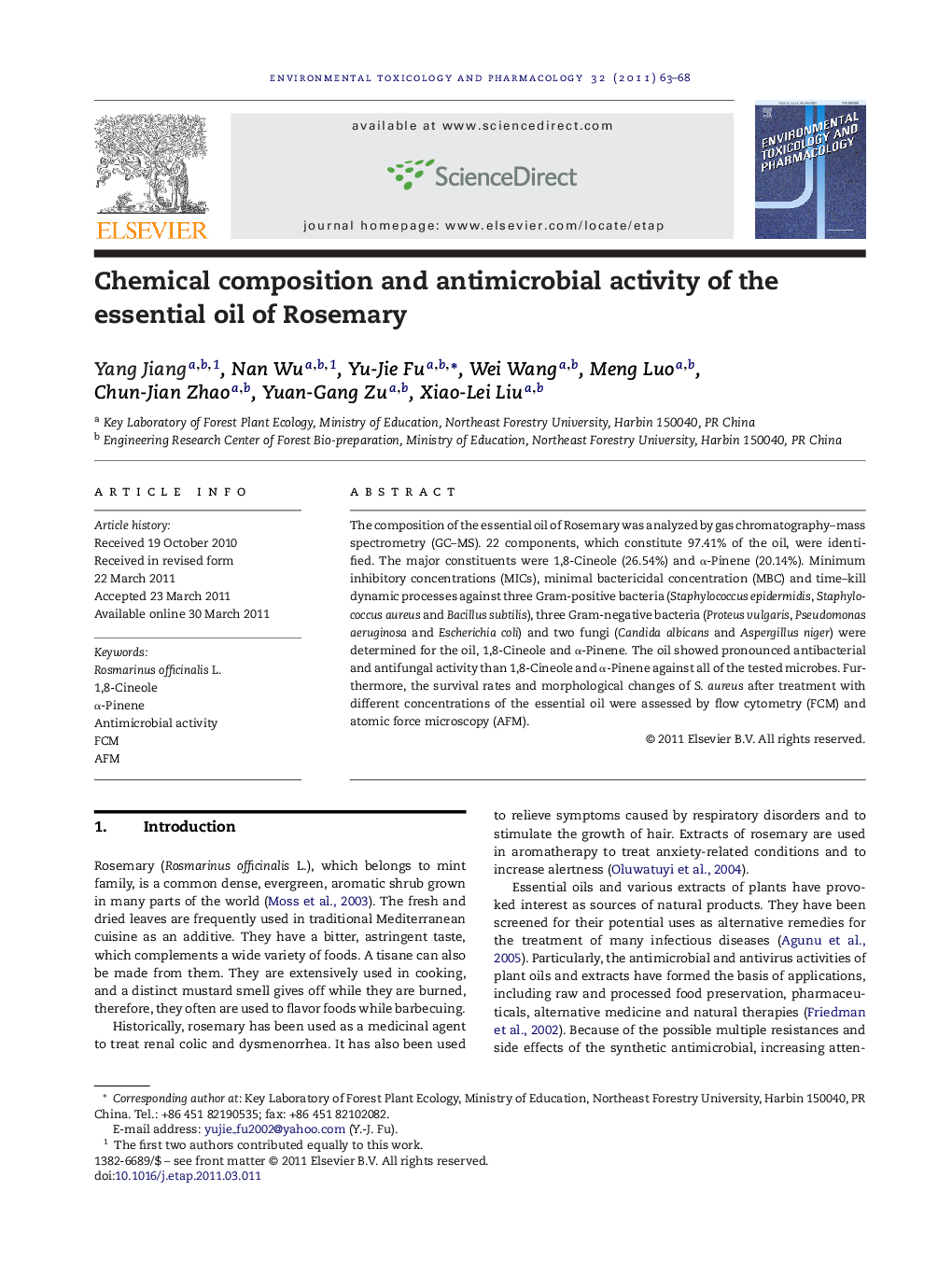| Article ID | Journal | Published Year | Pages | File Type |
|---|---|---|---|---|
| 2584162 | Environmental Toxicology and Pharmacology | 2011 | 6 Pages |
The composition of the essential oil of Rosemary was analyzed by gas chromatography–mass spectrometry (GC–MS). 22 components, which constitute 97.41% of the oil, were identified. The major constituents were 1,8-Cineole (26.54%) and α-Pinene (20.14%). Minimum inhibitory concentrations (MICs), minimal bactericidal concentration (MBC) and time–kill dynamic processes against three Gram-positive bacteria (Staphylococcus epidermidis, Staphylococcus aureus and Bacillus subtilis), three Gram-negative bacteria (Proteus vulgaris, Pseudomonas aeruginosa and Escherichia coli) and two fungi (Candida albicans and Aspergillus niger) were determined for the oil, 1,8-Cineole and α-Pinene. The oil showed pronounced antibacterial and antifungal activity than 1,8-Cineole and α-Pinene against all of the tested microbes. Furthermore, the survival rates and morphological changes of S. aureus after treatment with different concentrations of the essential oil were assessed by flow cytometry (FCM) and atomic force microscopy (AFM).
Graphical abstractFigure optionsDownload full-size imageDownload as PowerPoint slideHighlights► 22 components of the Rosemary essential oil were identified by GC–MS. ► The major constituents were 1,8-Cineole (26.54%) and α-Pinene (20.14%). ► The oil showed pronounced antibacterial and antifungal activity than 1,8-Cineole and α-Pinene against all of the tested microbes. ► The survival rates and morphological changes of S. aureus after treatment with the essential oil were assessed by FCM and AFM.
